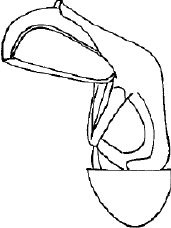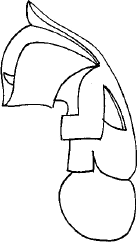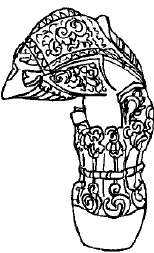|
Jawa Demam is the most common hilt shape in Sumatra as well as in the Peninsula or in Sulawesi. It represents a deity, half bird, half human, probably a Garuda, in a squatting position, holding it sides as if it was shivering with cold (Demam means fever in Bahasa). WW Skeat in "Malay Magic" as a different interpretation: The Nagas are generally represented in old sculptures as bearing the human form, but with a snake attached to their backs, and the hooded head rising behind their necks. This may be the explanation of the Malay Keris hilt, which represents a seated human form with folded arms and a hood at the back of its neck rising over its head.
|
|||||||||||||||||||
|
|
|
|
|
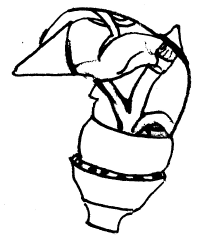 |
|||||||||||||||
|
JAWA DEMAM Jambi (1) |
JAWA DEMAM Palembang (1) |
VEILED DURGA Jambi (1) |
JAWA DEMAM Palembang (1) |
JAWA DEMAM Gayo (1) |
|||||||||||||||
 |

|
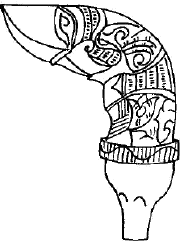
|
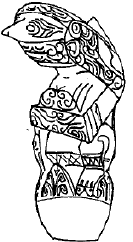 |
||||||||||||||||
| Lampung (1) | Palembang (1) | Lampung (1) | Lampung (1) | ||||||||||||||||
|
There is an interesting evolution of the hilt shape from Southern Sumatra up to the Malay Peninsula. In the South, one can see the influence of Northern Java hilts, whereas in the Peninsula the hilt is totally abstract. Here are the main variation, which can be found in Sumatra from South to North:
| |||||||||||||||||||
